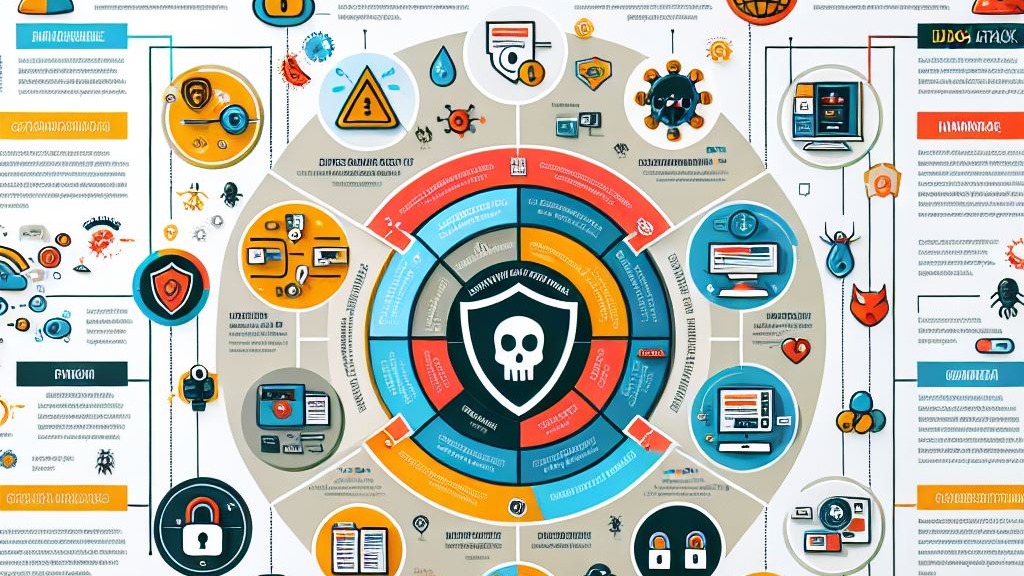In today’s digital age, cybersecurity threats are becoming increasingly sophisticated and prevalent. These threats can compromise sensitive data, disrupt business operations, and cause significant financial losses. To protect your organization, it’s essential to understand how to identify and mitigate them. This article explores the common types of cybersecurity threats, how to identify them, and provides mitigation strategies.
Common Types of Cybersecurity Threats
Organizations should be aware of several cybersecurity threats, including:
1. Malware
Malware is software designed to harm or exploit a computer system. Common types of malware include:
- Viruses – Infect legitimate software and spread when executed.
- Worms – Replicate themselves and spread without human intervention.
- Trojans – Disguise as legitimate software to deliver malicious payloads.
2. Phishing
Phishing is a social engineering attack where attackers trick victims into revealing sensitive information, such as login credentials or financial data, through fraudulent emails, websites, or messages.
3. Ransomware
Ransomware encrypts files and demands payment in exchange for the decryption key. This type of malware can severely impact businesses by locking essential data.
4. Denial of Service (DoS) Attacks
DoS attacks overwhelm a computer system with traffic to render it unavailable. Distributed Denial of Service (DDoS) attacks involve multiple sources, making mitigation challenging.
5. Insider Threats
Authorized personnel can unintentionally or intentionally compromise security, either due to negligence or malicious intent.
How to Identify Cybersecurity Threats
Identifying cybersecurity threats requires a combination of technical and non-technical measures:
- Monitor Network Activity – Keep track of network traffic patterns for unusual login attempts or unauthorized data transfers.
- Implement Intrusion Detection Systems (IDS) – IDS tools help detect and alert on potential security threats.
- Conduct Regular Security Audits – Regularly assess vulnerabilities and weaknesses in your organization’s security posture.
- Train Employees – Educate employees on cybersecurity best practices and how to recognize potential threats.
- Stay Informed – Follow reputable cybersecurity sources to stay updated on emerging threats.
How to Mitigate Cybersecurity Threats
A multi-layered approach is crucial for mitigating cybersecurity threats. Consider implementing the following strategies:
- Implement a Firewall – Firewalls block unauthorized access to your organization’s network.
- Use Antivirus Software – Protect systems from malware by utilizing reputable antivirus programs.
- Use Strong Passwords – Enforce strong, unique passwords and consider using a password manager.
- Implement a Backup and Disaster Recovery Plan – Ensure business continuity by maintaining secure backups.
- Conduct Regular Security Updates and Patches – Keep systems and software updated to prevent exploits.
Best Practices for Cybersecurity
Beyond technical solutions, organizations should adopt best practices to strengthen cybersecurity measures:
✅ Use Two-Factor Authentication (2FA) – Add an extra layer of security to user accounts.
✅ Use Encryption – Encrypt sensitive data both in transit and at rest to prevent unauthorized access.
✅ Implement an Incident Response Plan – Establish protocols to quickly respond to security breaches.
✅ Conduct Regular Security Awareness Training – Educate employees about evolving cybersecurity threats.
✅ Stay Informed – Continuously monitor emerging cybersecurity risks through trusted sources.
Conclusion
Cybersecurity threats pose significant risks to organizations of all sizes. By understanding and proactively mitigating these threats, businesses can protect sensitive data, avoid financial losses, and maintain operational integrity. Staying informed, adopting a multi-layered security approach, and conducting regular security awareness training are key steps to ensuring a robust cybersecurity posture.
Recommendations
📌 Conduct a Cybersecurity Risk Assessment – Identify vulnerabilities in your security posture.
📌 Implement a Security Information and Event Management (SIEM) System – Monitor and analyze security-related data in real-time.
📌 Use a Reputable Cybersecurity Framework – Follow NIST, ISO 27001, or similar guidelines.
📌 Conduct Regular Penetration Testing – Identify weaknesses in systems and applications.
📌 Develop a Cybersecurity Incident Response Plan – Ensure preparedness for security incidents.








